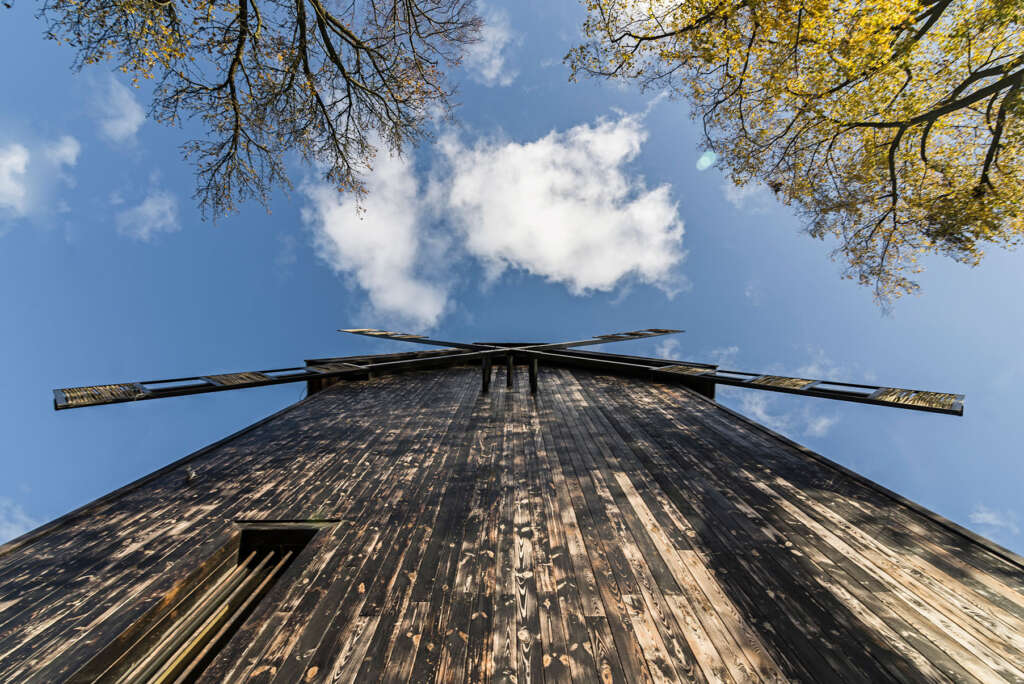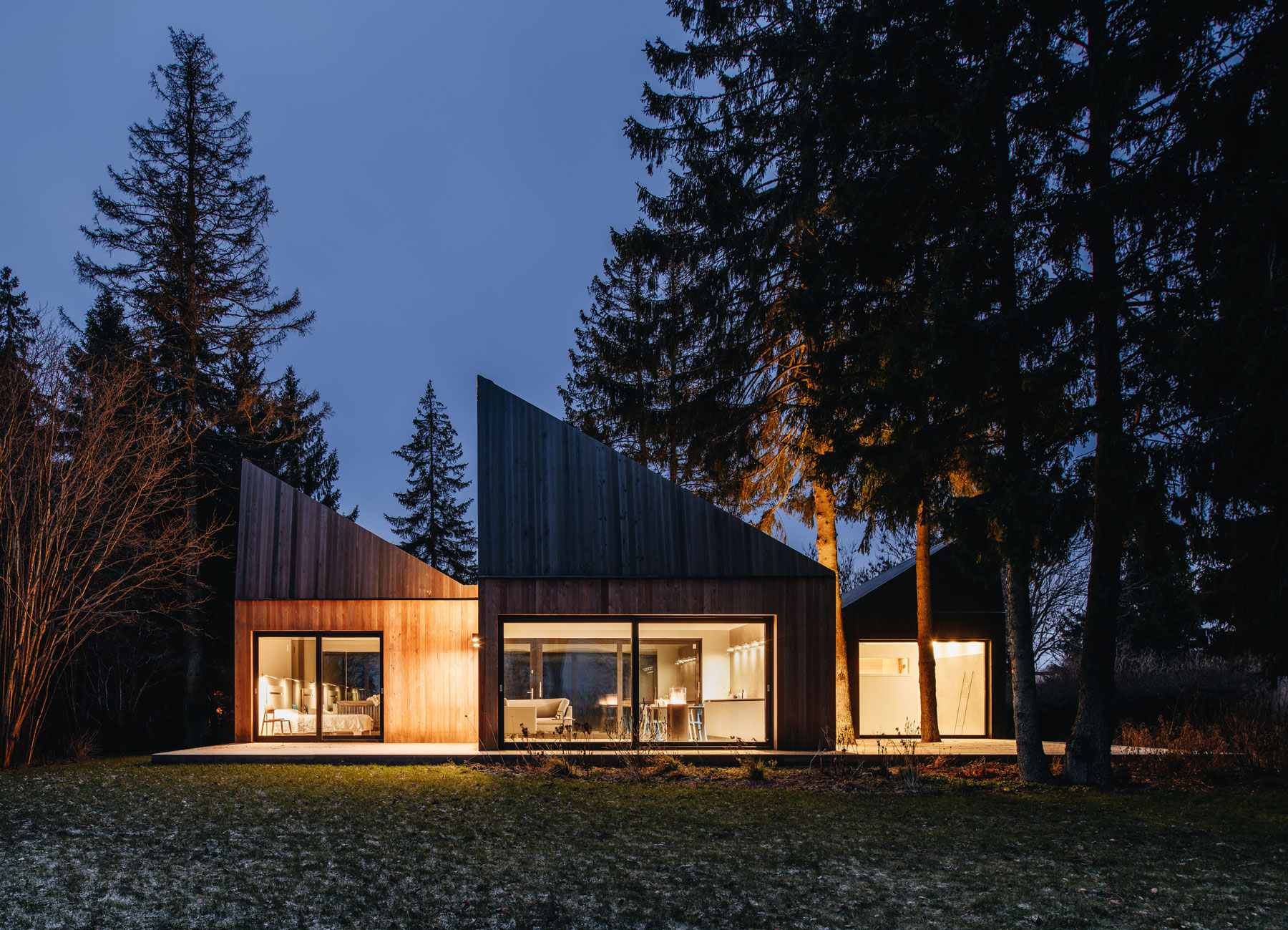
Windmill House
Architect: Michał Kucharski, Mateusz Piwowarski | o4architekci
Location: Lublin Region, Poland
Type: House
Year: 2022
Photographs: Rafał Chojnacki
The following description is courtesy of the architects. The foundations for the project were created as a part of the international competition “Contemporary House 2014 – Village House”. The work of Tomasz Padło and Michał Kucharski was awarded at the national level in Poland. A few years later, the project was noticed by an investor from the Lublin region, who was in possession of an old windmill. The initial concept summarized the necessary modifications. It has also been adapted to customer requirements as well as technical and local conditions.
Context
The building was designed to fit into the rural landscape. The building’s form is a well-known, characteristic and strong element of the traditional architecture of the Polish countryside. The windmills were historically used to grind grain by wind power. They were located in many towns and villages in Poland and other European countries. Until the time of the Industrial Revolution, the number of mills increased and their popularity grew. Due to the practicalities of their use, windmills were usually exposed in the skylines of the cities of the time.




Function and Form
The building aims to combine the modern way of living with new residential function. The old mill gains a second life and a new, modern look. Simultaneously it retains its original expression and form. The challenge was to include the functional program within the existing form. Due to its previous purpose, the building was principally vertical. The ground plan was restricted to external dimensions of 6.5 x 6.5m. Therefore, the rooms were spread over 3 above‑ground floors and an additional mezzanine. An underground section was designed, to gain more living space. This encompasses a garage, technical room and spacious guest lounge. The reinforced concrete structure is covered with earth and supports the main body. Also, an external terrace has been created on the top of an extended part of the basement. The above-ground floors contain rooms for the main users – the family. On the ground floor there is a living space with a kitchen and a reading room. It opens onto the garden with extensive glazing. An additional hidden window allows a view of the entrance area. On the next two upper floors, there are bedrooms with en-suite bathrooms. The top floor has the mezzanine comprising a work space with a commanding view of the surrounding fields. The opening between the top levels allowed for the placement of a historic brake wheel inside. An original trestle from a disassembled windmill was placed on the ground floor.





Construction
Due to its new function, the building required a completely new structure. Old and reusable elements have been cleaned and restored. The lower part has reinforced concrete floors, walls and ceiling. Four pillars seated on the ground floor support the upper levels of the building. Old beams from the mill were used in the outer walls, creating a half-timbered wall interior. The windmill has a gable roof with a wooden truss of a rafter-collar beam structure.




Finish
The finish of the building is a combination of old and new, historical and modern elements. The material concept is based on an interplay between three materials. The most important is wood. Old wooden construction boards were used on the facade. The new wooden boards were partially charred. In some places another important material comes into play – reinforced concrete. It is this which supports the building. It also finds application in the retaining walls. The final significant material is glass. It’s most used on the ground floor, in the underground part and on the mezzanine. It permits the interior to be opened up to the surrounding nature and ploughland. High vertical windows are used in the upper parts of the building. The composition of the windows creates a unified impression with the repeating rhythm of the facade planks. Wooden shingle was used as roofing material. One particularly interesting idea coming from the investor was the use of old railway sleepers as fencing spans.
The process of creation is a combination of a bold and innovative design idea, (a) technical workshop(s) and the bold approach of the investor.




Project Details
- Location: Lublin Region in Poland
- First idea: Michał Kucharski, Tomasz Padło
- Conceptual project: Michał Kucharski, Mateusz Piwowarski
- Building and executive project: Michał Kucharski, o4architekci Mateusz Piwowarski (http://o4architekci.pl/), Sylwia Ciesielska
- Technical support: Arkadiusz Szałyga
- Mechanical installation: Kozmik Projekt
- Photos: Rafał Chojnacki Fotografia Architektury




